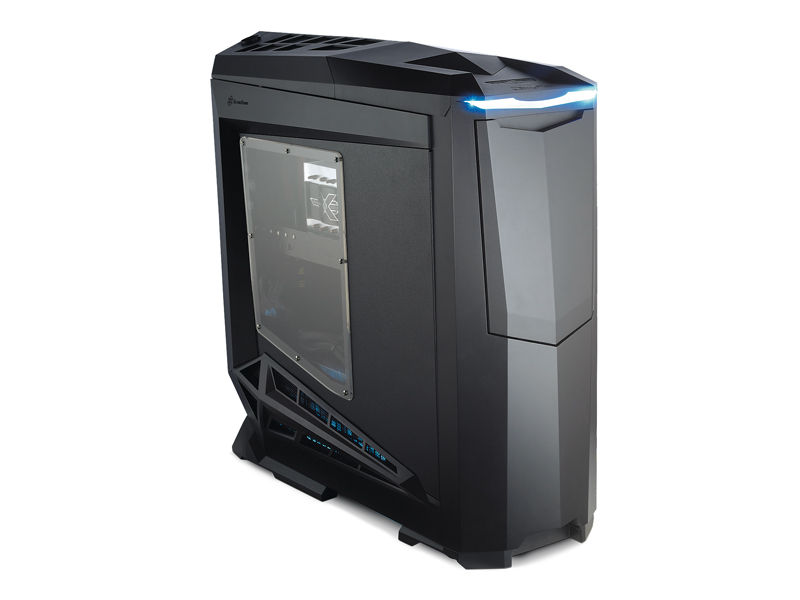TechRadar Verdict
The overclock is over-ambitious and crossfire isn't enabled by default. Sloppy!
Pros
- +
CrossFire 5870s prove their worth
Cons
- -
The overclocking failed!
- -
You can find better, cheaper
- -
Looks aren't to all tastes
Why you can trust TechRadar
We were all a tingle firing this black monster up. The Dino PC Sixth Sense is the first system we've seen to try and push the as-yet unplumbed limits of AMD's new six-core chip.
Onboard we have the top-spec version, the 1090T Black Edition, which has a stock speed of 3.2GHz, but here it is overclocked to an alarming 4.2GHz. At two bags of sand (that's cockney talk, mate) it ain't cheap, but it held promise.
First impressions are dominated by the great, black monster of a case. The design is touted as being inspired by the Stealth bomber, which is something of a shame because it is an ugly aircraft.
The board is rotated by 90° with your backplates on top of the case, under a removable cover. There's not a lot of room under this to plug stuff in, and this is where your USB 3.0 ports are, so we suspect the cover will be discarded quickly.
The interior has lovely rows of tool-free drive bays and blue lights (are these still hip, we wonder?). The motherboard is the excellent, very tweak-friendly Asus Crosshair IV and graphics come from two Radeon HD 5870. Very nice: there's not a lot that can beat that bar a pair of GTX 480s, which cost muchos money.
The 'fastest PC ever' – the Hydro Nemesis – features the same graphics set-up. Windows boots from a fat 128GB SSD and is backed by a 1TB of conventional storage. No screen, no mouse or keyboard, though – this is a system box only. All round, this is a nicely specified machine. More than the 4GB RAM would be nice, but there are no obvious weak points.
Oh dear, its dead
And then it all goes wrong. While stable at the desktop, the system simply refused to benchmark. Stressing the processor produced an instant BSD. We dropped the overclock to 4.1GHz. Better, but still not what you'd call stable.
There was nothing to do but crank it back to 4.0GHz. We knew this should work from our experiments with the Thuban last month, and indeed it did. This is very poor, chaps. Somebody wasn't testing properly and if you'd just shelled out for this you'd be proper browned off: it simply isn't a stable 4.2GHz system.
Maybe the 1090T has more to offer than 4.0GHz, but it'll need a more assiduous approach than this. We suspect better cooling would help. The cooler fitted is half-decent, but the simple AMD clip mounting is strained when fitting such a tall cooler vertically (the leverage causes it to sag).
Having got the system stable, the gaming results were initially terrible. A simple explanation: CrossFire wasn't enabled. Sloppy, sloppy, sloppy.
Where does this leave us? With a system that's not going to win any awards from us, that's where. We can't help but feel that a similar system on an Intel platform would be a better bet.
The complete hash made of overclocking aside, we're really convinced that an AMD system can really win out in an unabashed high-end gaming system anyway. Not the most auspicious start for Mr Thuban's overclocking adventures, though.
Follow TechRadar Reviews on Twitter: http://twitter.com/techradarreview
